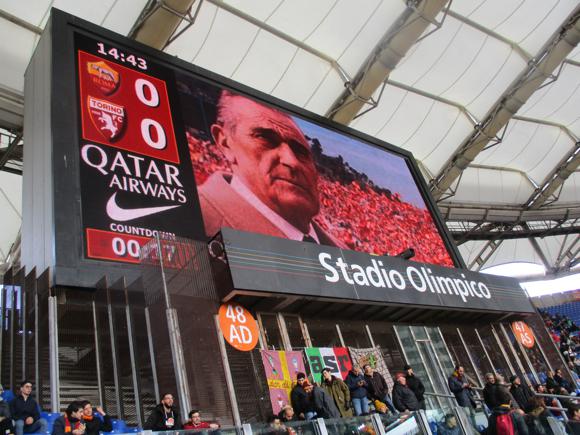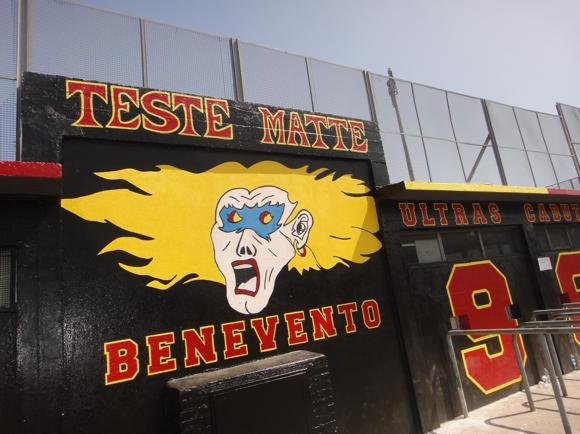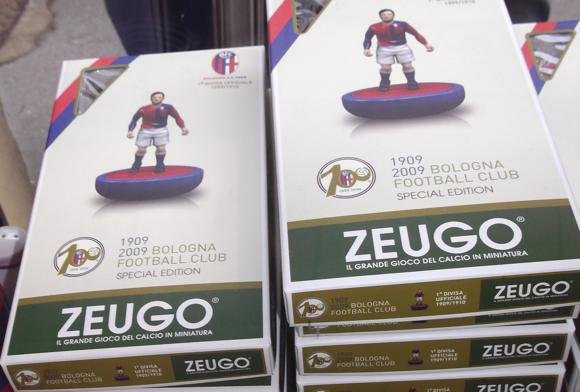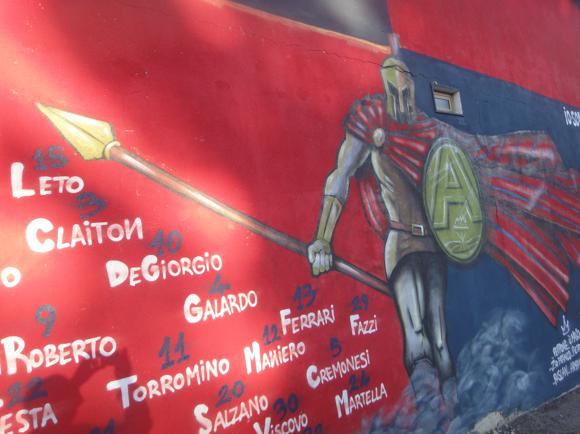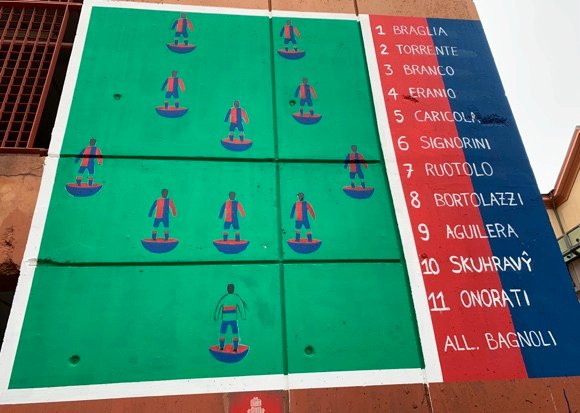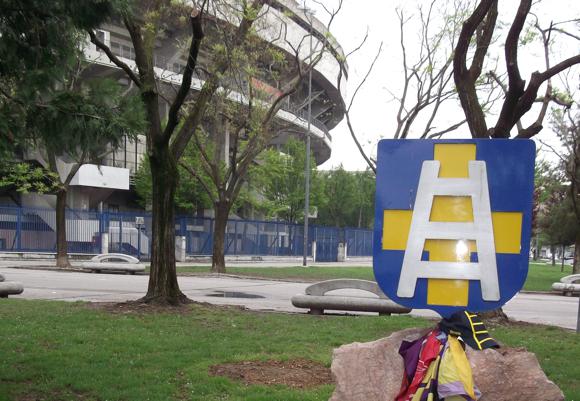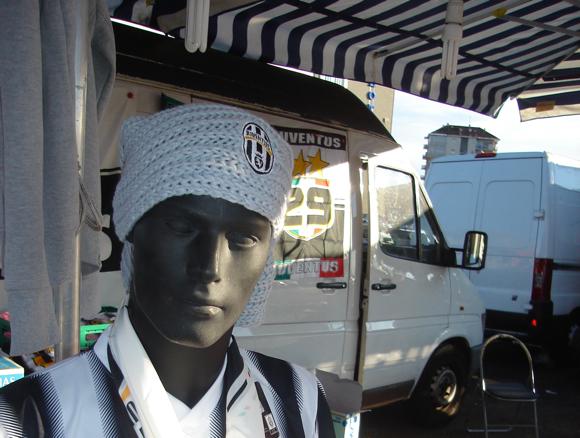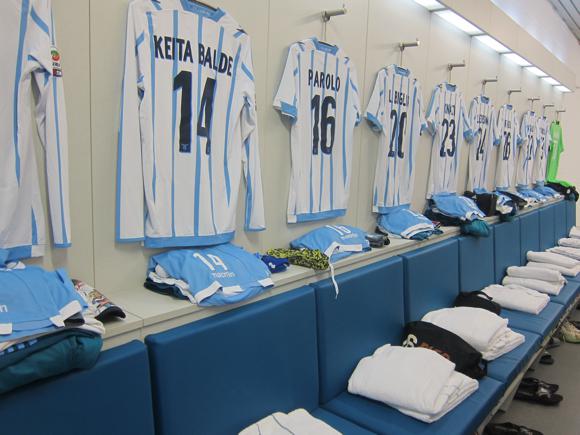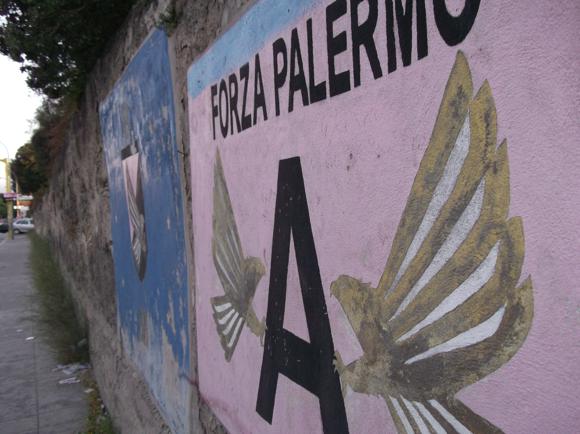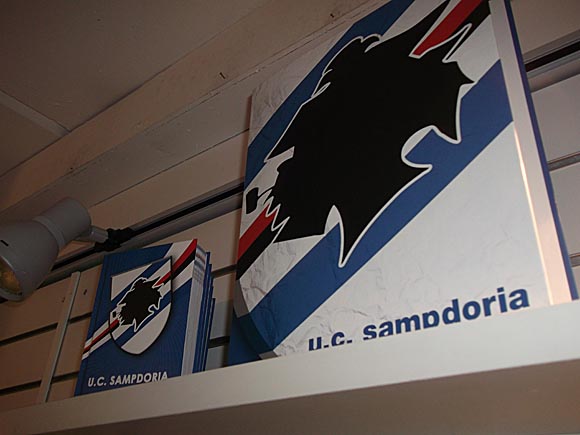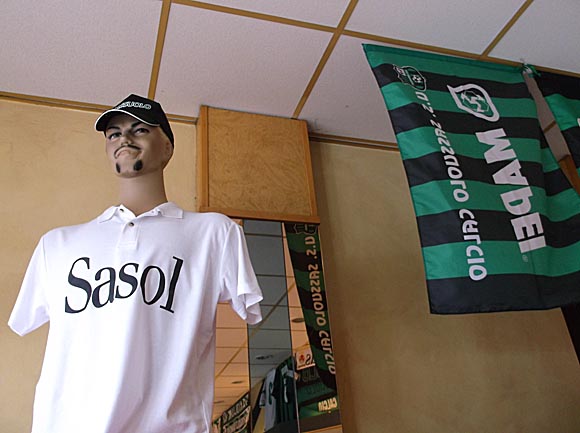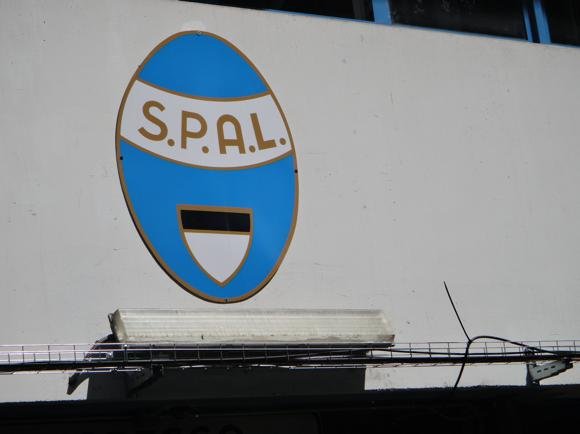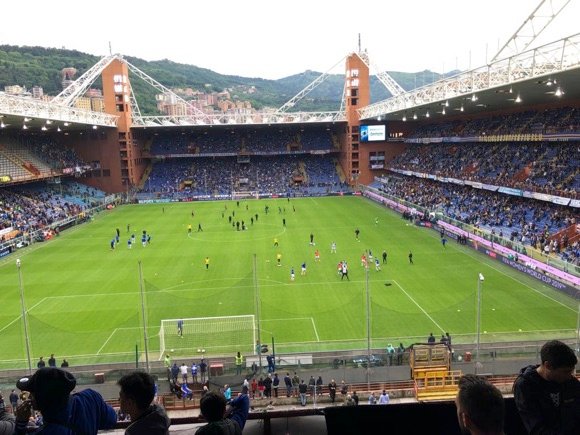A fan’s guide – the club from early doors to today
The flagship club of the calcio-crazy city of Naples is enjoying its best spell since the heady days of Diego Maradona 35 years ago. In the box seat to wrest the title from Juventus after so many seasons, SSC Napoli became the neutral’s favourite and at the forefront of the mini-revival of the moribund Serie A.
No, there’s no Maradona lording it over the finest players on the planet, Sunday after Sunday, to send Naples into communal paroxyms of ecstasy – that really is once-in-a-lifetime stuff – but in their way, the consecutive reigns of Walter Mazzarri, Rafael Benítez and Maurizio Sarri were as miraculous. Certainly, Napoli have come a very long way since going bankrupt in 2004 and playing third-tier football.
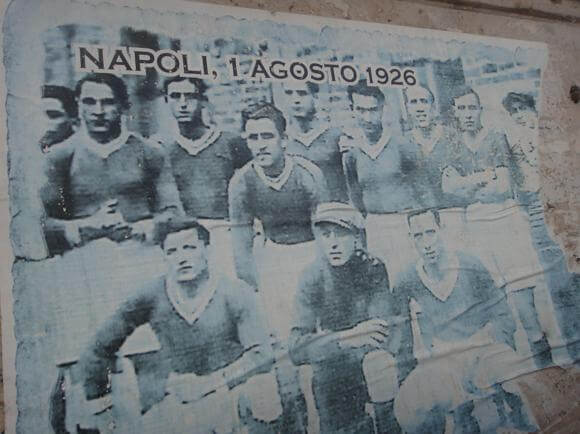
The club in its present form dates back to 1926. Key figures have been high-profile South American stars – Paraguayan Attila Sallustro and 1930 World Cup hero Guillermo Stábile before the war, Omar Sívori and José Altafini after it, not to mention Maradona, Careca and Edinson Cavani – and the high-powered club presidents – Giorgio Ascarelli, Achille Lauro, Corrado Ferlaino and Aurelio De Laurentiis – who signed them.
Napoli only registered one point in their first season, earning them the nickname ‘I ciucciarelli’, ‘The Little Donkeys’. Under influential English coach Willy Garbutt, Napoli picked up then enjoyed occasional purple patches before and after the war, picking up the Italian Cup in 1962.
The first side of real quality came in the early 1970s, with Dino Zoff in goal, Altafini up front and fans’ hero Antonio Juliano. One of several sturdy, home-grown defenders, Juliano would be followed by Ciro Ferrara, Fabio Cannavaro and brother Paulo, later team captain.
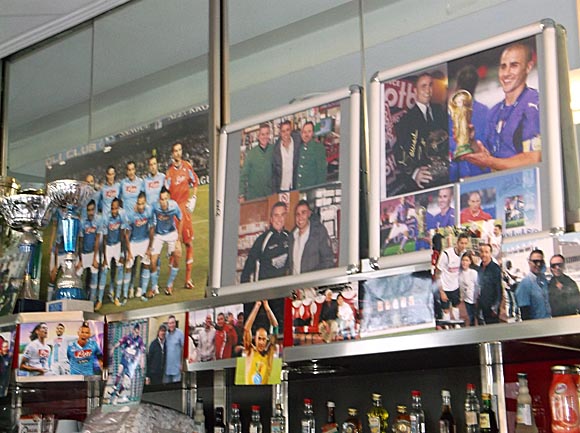
Napoli finished top three several times but required a messiah to break the northern monopoly. Enter Diego Maradona. After his World Cup triumph of 1986, and with ex-Napoli star Ottavio Bianchi as coach, Napoli beat teams of the highest quality to win their first title in 1987. Bad luck cursed European Cup campaigns but Bianchi marked his farewell with the UEFA Cup of 1989.
Maradona’s understudy, Gianfranco Zola, was coming to the fore in the run to a second title in 1990, marred by a controversial coin-throwing incident against Atalanta. As Maradona disappeared, Zola shone to help Napoli to an Italian Cup in 1991.
Relegated in 1998 and again in 2001, Napoli were declared bankrupt in 2004. Demoted to Serie C1 and not even promoted that season, Napoli were salvaged by movie mogul Aurelio De Laurentiis. Refounded and attracting record lower-league crowds, Napoli made Serie B, then, in scenes as dramatic as 1987, automatic promotion to Serie A was gained in 2007 with the crowd hanging on to the last second.
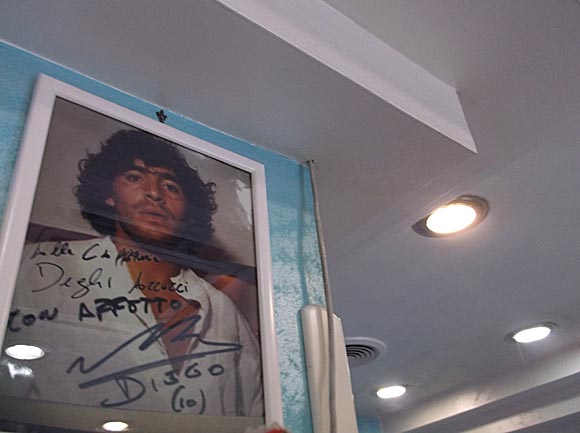
New signings for Serie A included slight Slovak striker Marek Hamšík, a huge success, but it took coach Walter Mazzarri and prolific Uruguayan Cavani for Napoli to top form. Third in 2011, Napoli embarked on a Champions League campaign that featured a win over Manchester City and a heart-stopping extra-time defeat to eventual winners Chelsea.
With the departure of Mazzarri and Cavani, and arrival of Rafael Benítez, Napoli twice qualified for the Champions League in 2013 and 2014. A semi-final appearance in the Europa League was the highlight of the 2014-15 campaign, as well as the goal-scoring prowess of Gonzalo Higuaín.
The departure of Benítez for Real Madrid saw the arrival of Maurizio Sarri as coach for 2015-16. Higuaín hit his stride, scoring a modern-day record 36 league goals, even taking Napoli to the top of Serie A halfway through the campaign, a first since the Maradona era. Attendances at the San Paolo hit a near 40,000 average, up 20% on the previous campaign.
A highest-ever transfer in the Italian game saw the Argentine move to Juventus for €90 million – but this didn’t hault Sarri’s men.

Higuaín’s departure allowed forward Dries Mertens to take the limelight. Scoring consecutive hat-tricks in two league fixtures, the former PSV striker reached a total 28 goals for the season. Not only had he helped Napoli gain another Champions League slot after the knock-out stage defeat to Real Madrid in 2017, Mertens was at the forefront of the high-scoring mini-revival of Serie A. The Belgian international wasn’t even awarded the Golden Boot for being Capocannoniere in 2016-17, that went to Edin Džeko. Both Roma and Napoli had Goals For tallies in the 90s at the end of the season.
Maurizio Sarri was another factor in Napoli’s continued rise. A Tuscan of Neapolitan descent, the manager worked his way up through every level of the Italian game – Cavriglia, Sangiovannese, Perugia, Empoli – to oversee the most exciting Napoli side in 30 years. With ex-Liverpool veteran keeper Pepe Reina pulling off the occasional science-defying save, solid Senegalese centre-back Kalidou Koulibaly in front of him and hard-working Italo-Brazilian midfielder Jorginho tidying up all over the park, this Napoli team had the best shot at the Scudetto since 1990.

In the end, it just wasn’t to be, but a second place meant a third straight group-stage berth in the Champions League, Carlo Ancelotti in charge after Sarri’s move to Chelsea. A runners-up spot was also achieved in 2019, but this time way behind Juve, and following telling defeats to Liverpool and Arsenal in Europe. With Hamšík high-tailing it to China, much depended on locally born captain Lorenzo Insigne to rally the troops.
A poor run of league form saw Ancelotti sacked after a 4-0 win over Genk in the Champions League, and it was Gennaro Gattuso who led Napoli against a fading Barcelona in the knock-out stages. In a game they could and should have won, Napoli were limited to a 1-1 draw to take to the away leg, played after the first wave of the pandemic. Unable to claim a Champions League spot in the league, Napoli crumbled in the Nou Camp.
Gattuso again failed to achieve a top-four spot in 2021, his side also knocked out of the Europa League by Granada. His club facing its first indifferent spell for a decade, De Laurentiis duly dismissed Gattuso by Twitter and brought in Luciano Spalletti – with immediate results. Winning their first eight games straight, Napoli suffered narrow defeats to Inter and Milan, qualifying for the Champions League in 2022-23 but knowing that yet another Scudetto had been within their grasp.







Stadium Guide
The field of dreams – and the stands around it

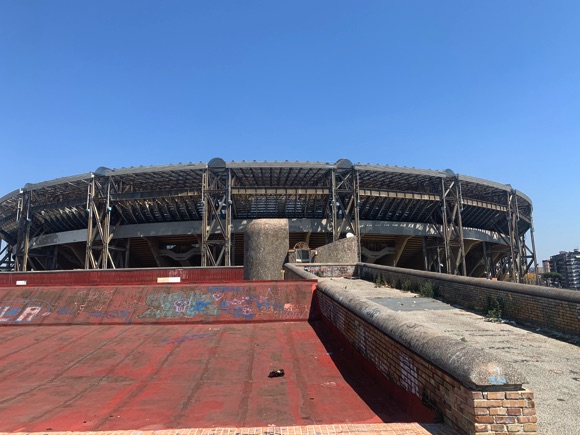
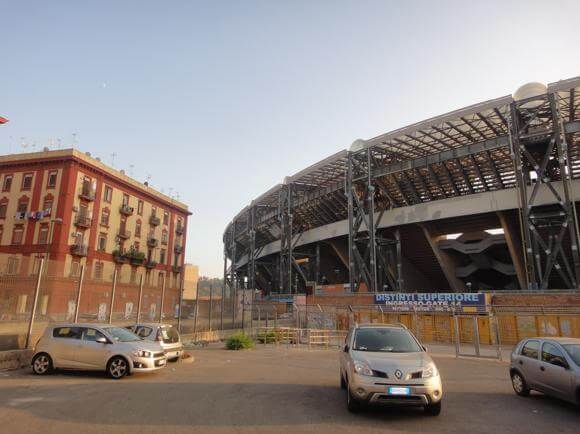


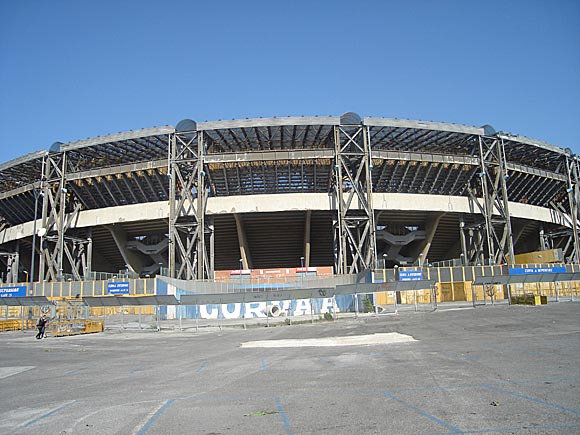
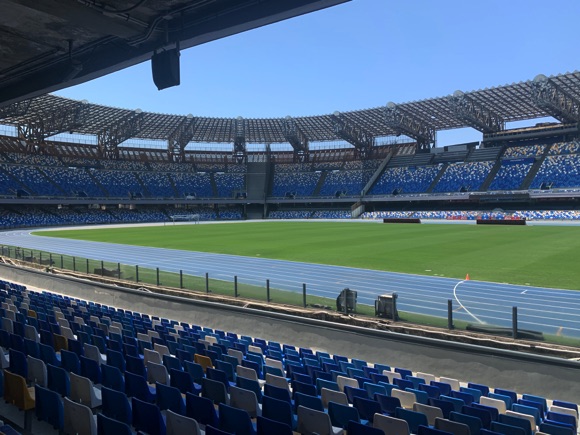
Opened with a match between Napoli and Juventus in December 1959, the huge, two-tier bowl of San Paolo was built in an area of toxic gases and extinct volcanoes known as Campi Flegrei.
Holding 85,000, the San Paolo had to be modified for Italia ’90 just as it was regularly packed to the rafters for the Diego show. Fabrizio Cocchia, son of original architect Carlo, was charged with the revamp.
Cocchia Jr kept the running track and the large capacity by altering the angle of the lower tier. A roof was added, lifted over the stands to allow a view of the hills beyond. A funeral hush becalmed the bowl when Roberto Donadoni, wearing the unlucky No.17 shirt, sank to his knees after missing the fateful penalty for Maradona’s Argentina to beat Italy in the subsequent World Cup semi-final.

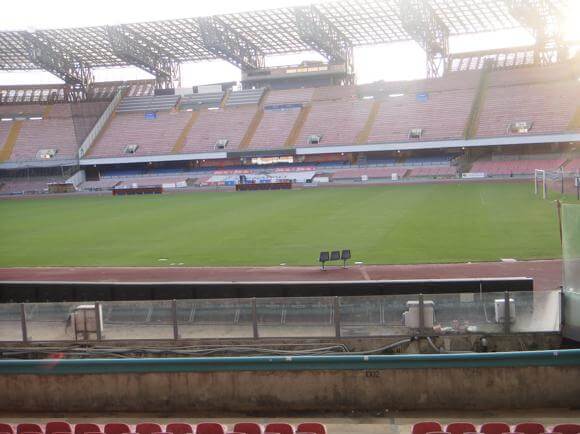

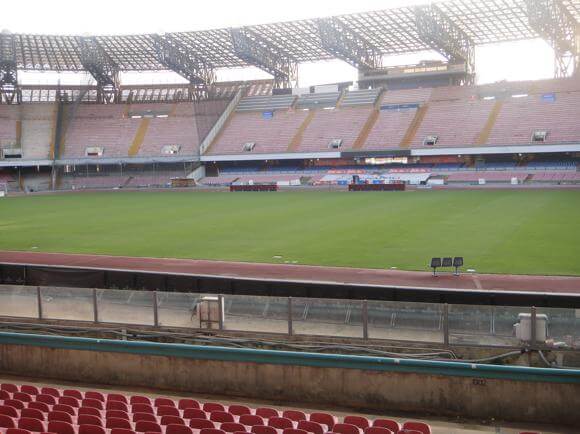
The capacity of 86,000 was reduced to 60,000 following a terrible storm in 2001 that caused considerable damage and forced Napoli to play a number of home games elsewhere. Necessary improvements followed but a much-criticised pitch remains in place.
More ambitious plans were shelved with Italy’s failed bids to host the Euros, although LED screens were installed in 2012, replacing the video ones that broadcast Donadoni’s dramatic misery 22 years previously. In 2019, capacity was further reduced to 55,000 to accommodate the Universiade student games. A year later, the shock death of Napoli’s favourite son saw the arena take his name: Stadio Diego Armando Maradona.
The stadium comprises two sweeping ends, home Curva A and home Curva B, with Napoli ultras in each. Away fans enter Gate 26 for the Settore Ospiti squeezed between Curva B and the main Tribuna Posillipo. Opposite, the Distinti stand along the sidelines allows for affordable gawping at the pageantry at each end.
getting there
Going to the stadium – tips and timings


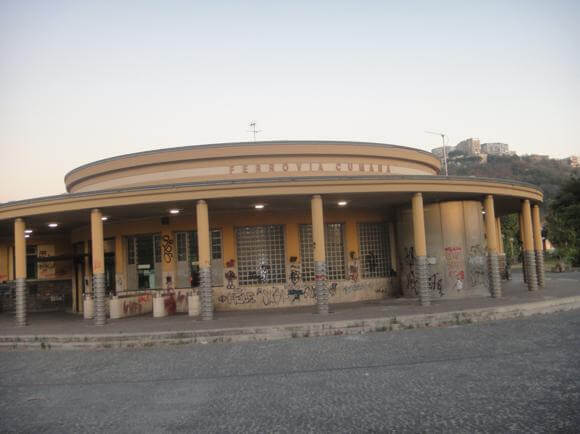
Campi Flegrei, a 10min walk to the stadium across palm-lined piazzale Tecchio, is directly linked to Garibaldi (Napoli Centrale) six stops away. At Napoli Centrale, head down to the lower level, and platform 2 for Line 2/direction Pozzuoli-Bagnoli-Formia (every 10-15mins) at the far end. A newsagent at the top of the lower escalators sells single tickets (€1.30) which you should stamp in the little machine facing the shop. Inspections are rare, but if you’ve gone to the trouble of buying a ticket, you may as well stamp it. Services are either dowdy, graffiti-covered metro vehicles or modern trains run by Treni Italia. It’s a 15min journey, mainly through tunnels.
The station you see by the Caffé Cumana by the stadium, Mostra, is on the regular Cumana line that runs from Montesanto four stops away, then heads further west. Mostra also serves metro line 6 from Mergellina – an extension is planned as far as Municipio, crossing line 1.
The most useful of the many buses that otherwise serve mainly Pozzuoli are the R7 from piazza Vittoria and the 151 from Garibaldi – but allow bags of time for traffic. These should only be used if there’s a problem with the metro.
getting in
Buying tickets – when, where, how and how much
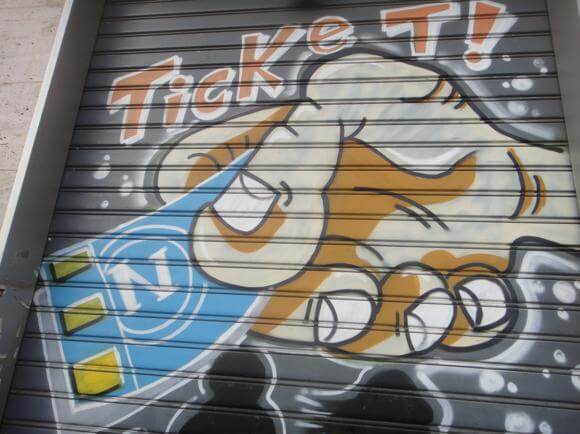
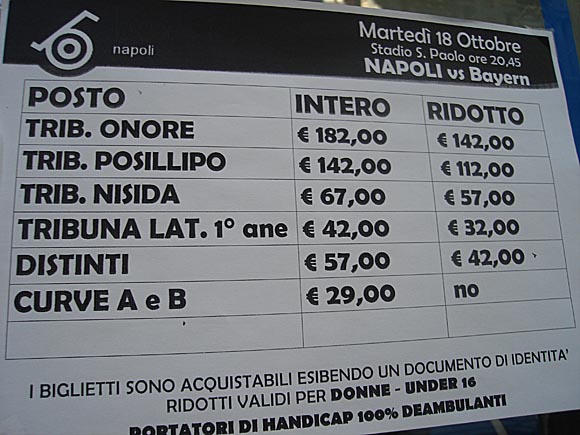

These days, Napoli average home gates of around 35,000, so even with the stadium’s reduced capacity of 55,000, availability should not be an issue.
The club puts tickets on general sale from ten days or so before the match, through TicketOne agencies across Naples. Centrally located ones include Eventi i Momenti Napoli (Mon-Fri 8.30am-7.30pm, Sat 8.30am-2pm) at corso Vittorio Emanuele 727 near Mergellina station, the ticket office at No.50 in the elegant Galleria Umberto I arcade behind the Royal Palace and Duomo Ticket (Mon-Fri 9.30am-8pm, Sat 9.30am-4.15pm) on piazza Nicola Amore right by Duomo metro station.
By the stadium, the Caffeteria degli Azzurri (via Giambattista Marino 15B) also distributes, as does the Promos 2.0 agency (Mon-Fri 9am-1.30pm, 2.30pm-6pm, Sat 10am-1pm) at piazzale Vincenzo Tecchio 49B by Campi Flegrei station.
TicketOne also deal with online sales (Italian-only). On match days until lunchtime, one of the bunker-like botteghini (usually No.3) opens for sales on the via Tansillo side of the stadium. Tickets are not usually sold from official outlets in the run-up to kick-off.
In all cases, you’ll need to show ID to buy tickets. Visiting supporters cannot purchase on match days.
Average prices run from €15-€20 in the Curva A/B to €60-€80 in the Tribuna Posillipo. A seat in the Distinti for €30-€40 allows for a good view of the action on and off the pitch.
what to buy
Shirts, kits, merchandise and gifts


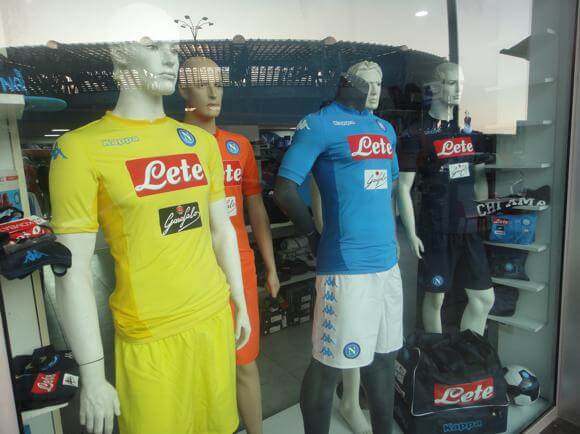

There is now only one official Napoli outlet, located at Centrale station (daily 9am-7pm), in a row of outlets to one side of the platforms.
By the stadium, you’ll find Blu Point Sport (Mon-Sat 9.30am-1.30pm, 4pm-8pm) next to the Caffetteria degli Azzurri at via Giambattista Marino 15A, while on match days, an official stall sets up on the concourse. There are unofficial Napoli stores all over town, such as the Fan Shop Napoli (Mon-Sat 10am-8pm, Sun 10.30am-2pm) at via Giovanni Merliani 88, near Vanvitelli metro station.
Official merchandise includes the classic Napoli shirt in sky blue, current away ones in black and limited-edition Diego tops (€150!). For a fashion statement, you can’t do better than UV sunglasses with a little Napoli logo on the frame, ideal for that boat trip to Capri. If you’re looking for an original present, then a Napoli Subbuteo set or Monopoly game should provide hours of fun.
Where to Drink
Pre-match beers for fans and casual visitors

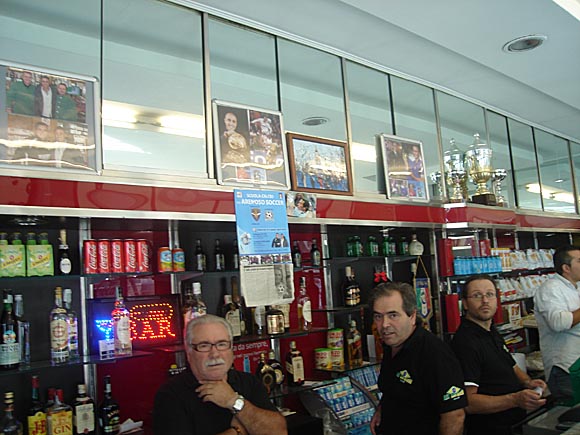



The only real pub in the vicinity is Paddy’s, at via Terracina 191, open from 7pm until late, so only really handy for evening games. It’s a 10min walk from the stadium, at the exact opposite end from Campi Flegrei station.
Kiosks, chalets, huts and cabins dot piazzale Tecchio, the most sturdy and convivial being the terrace Caffè Cumana by Mostra station.
There are also plenty of regular bars and cafés, along via Giambattista Marino and around piazza Gabriele d’Annunzio, where the Caffetteria Monnalisa (No.48) has a back bar plastered in Kodak images of the barman with sundry stars (Lippi, Cannavaro, Nedved) and a bar counter buzzing with football talk between staff and regulars.
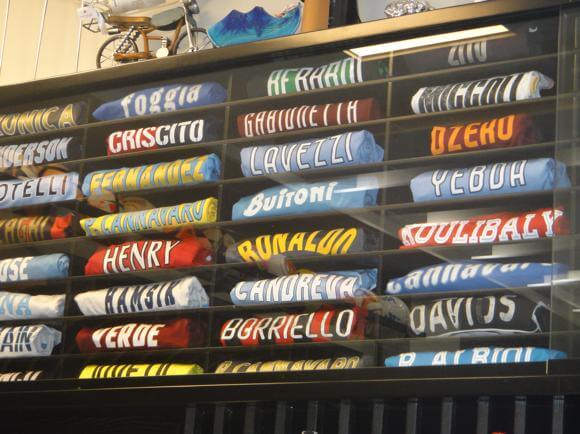
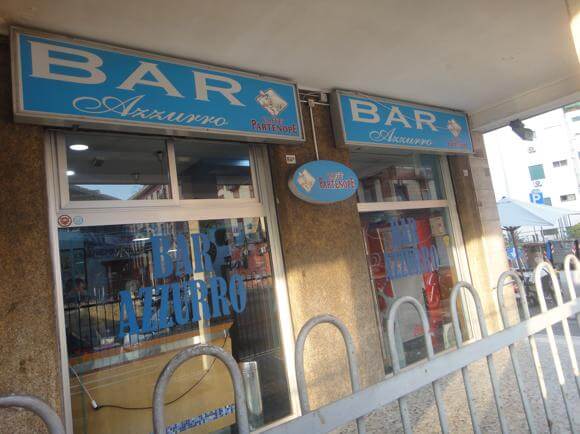

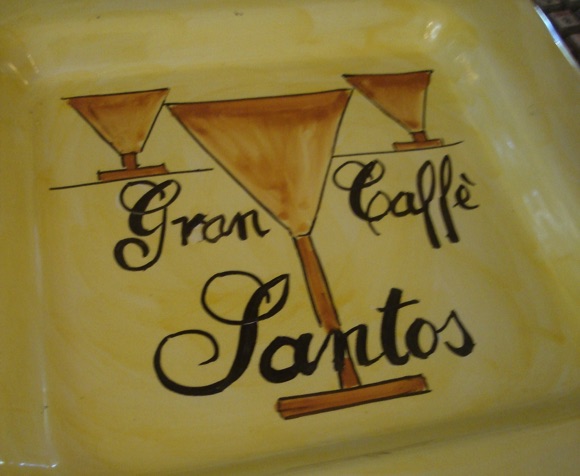



For just a Napoli-centric corner bar, nearby Bar Azzurro (via Tansillo 52) is decked out in Napoli shirts and iconography. Round the corner, the Caffetteria degli Azzurri (via Giambattista Marino 15A) next to Blu Point Sport has recently had a makeover and now sports a cool back-bar design displaying classic Serie A shirts with players’ names prominent. Note the Buitoni Napoli shirt of Maradona lore. The café doubles up as an outlet for match tickets, ID required.
Several non-descript outlets line this side of piazzale Tecchio towards Campi Flegrei station. The most traditional place, the Gran Caffè Santos Gibran, is an old-school café of the timeless Italian mould, where coffee and sticky cakes trump booze, although alcohol is most certainly available.



